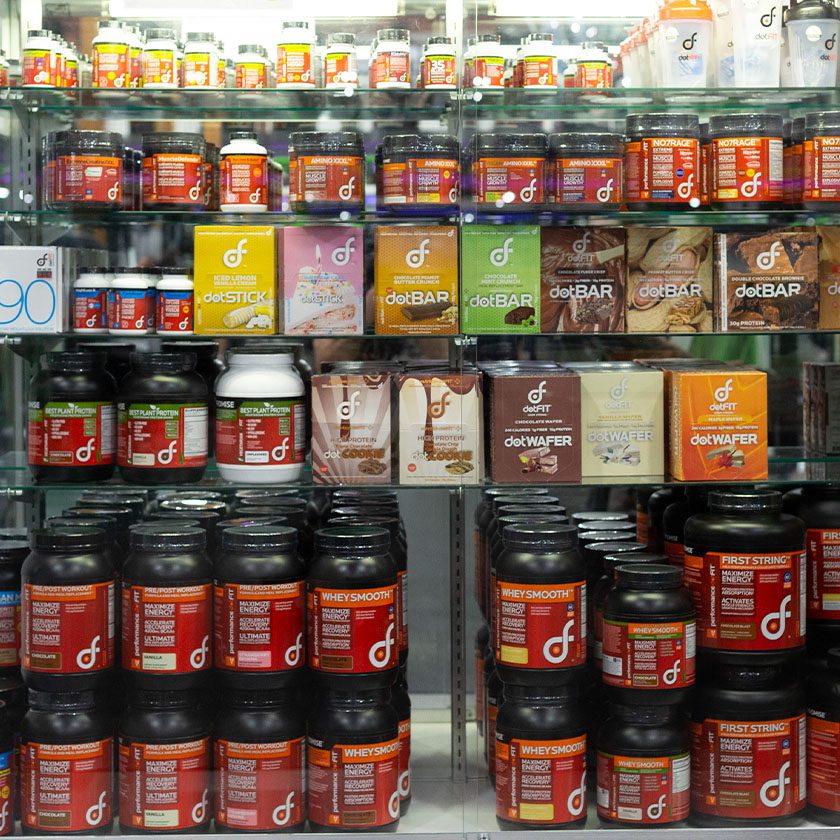armed sports nutrition
Armed sports nutrition
From experiences that inspire, to state-of-the-art innovations in healthy solutions—Since 1977, The Vitamin Shoppe® has been leading the charge, so you can be better than yesterday https://buyme4you.com. Our knowledgeable Health Enthusiasts® are here to offer encouragement along with unsurpassed knowledge and expertise to deliver a highly personalized experience that’s tailored to you.
At Prime Sports Nutrition, we’re dedicated to helping you reach your Prime. We offer premium quality sports nutrition supplements, backed by unmatched customer service and lightning fast shipping. Whether you’re an elite athlete or just starting your fitness journey, we’re here to assist you with your goals. Stay Prime.
Did you know that with our Healthy Awards® program, you can earn points for every dollar you spend? And that those points turn into big Awards? Oh, and did we mention the exclusive perks and rewards? Sweeeeet.

International society sports nutrition
In addition to direct assessments of timed administration of nutrients, other studies have explored questions that center upon the pattern of when certain protein-containing meals are consumed. Paddon-Jones et al. reported a correlation between acute stimulation of MPS via protein consumption and chronic changes in muscle mass. In this study, participants were given an EAA supplement three times a day for 28 days. Results indicated that acute stimulation of MPS provided by the supplement on day 1 resulted in a net gain of ~7.5 g of muscle over a 24-h period . When extrapolated over the entire 28-day study, the predicted change in muscle mass corresponded to the actual change in muscle mass (~210 g) measured by dual-energy x-ray absorptiometry (DEXA) . While these findings are important, it is vital to highlight that this study incorporated a bed rest model with no acute exercise stimulus while other work by Mitchell et al. reported a lack of correlation between measures of acute MPS and the accretion of skeletal muscle mass.
In younger subjects, the ingestion of 20–30 g of any high biological value protein before or after resistance exercise appears to be sufficient to maximally stimulate MPS . More recently, Macnaughton and colleagues reported that 40 g of whey protein ingestion significantly increased the MPS responses compared to a 20 g feeding after an acute bout of whole-body resistance exercise, and that the absolute protein dose may operate as a more important consideration than providing a protein dose that is normalized to lean mass. Free form EAAs, soy, milk, whey, caseinate, and other protein hydrolysates are all capable of activating MPS . However, maximal stimulation of MPS, which results in higher net muscle protein accretion, is the product of the total amount of EAA in circulation as well as the pattern and appearance rate of aminoacidemia that modulates the MPS response . Recent work has clarified that whey protein provides a distinct advantage over other protein sources including soy (considered another fast absorbing protein) and casein (a slower acting protein source) on acute stimulation of MPS . Importantly, an elegant study by West and investigators sought to match the delivery of EAAs in feeding patterns that replicated how whey and casein are digested. The authors reported that a 25 g dose of whey protein that promoted rapid aminoacidemia further enhanced MPS and anabolic signaling when compared to an identical total dose of whey protein when delivered as ten separate 2.5 g doses intended to replicate a slower digesting protein. The advantages of whey protein are important to consider, particularly as all three sources rank similarly in assessments of protein quality . In addition to soy, other plant sources (e.g., pea, rice, hemp, etc.) have garnered interest as potential protein sources to consider. Unfortunately, research that examines the ability of these protein sources to modulate exercise performance and training adaptations is limited at this time. One study conducted by Joy and investigators compared the effect of supplementing a high-dose (48 g/day) of whey or rice protein in experienced resistance-trained subjects during an 8-week resistance training program. The investigators concluded that gains in strength, muscle thickness and body composition were similar between the two protein groups, suggesting that rice protein may be a suitable alternative to whey protein at promoting resistance training adaptations. Furthermore, differences in absorption kinetics, and the subsequent impact on muscle protein metabolism appear to extend beyond the degree of hydrolysis and amino acid profiles . For instance, unlike soy more of the EAAs from whey proteins (hydrolysates and isolates) survive splanchnic uptake and travel to the periphery to activate a higher net gain in muscle . Whey proteins (hydrolysates and isolates) appear to be the most extensively researched for pre/post resistance exercise supplementation, possibly because of their higher EAA and leucine content , solubility, and optimal digestion kinetics . These characteristics yield a high concentration of amino acids in the blood (aminoacidemia) that facilitates greater activation of MPS and net muscle protein accretion, in direct comparison to other protein choices . The addition of creatine to whey protein supplementation appears to further augment these adaptations ; however, an optimal timing strategy for this combination remains unclear.
An accurate estimation of athletes’ energy needs is crucial in diet planning to improve sport performance and to maintain an appropriate body composition. This study aimed to develop and validate in elite athl…

In addition to direct assessments of timed administration of nutrients, other studies have explored questions that center upon the pattern of when certain protein-containing meals are consumed. Paddon-Jones et al. reported a correlation between acute stimulation of MPS via protein consumption and chronic changes in muscle mass. In this study, participants were given an EAA supplement three times a day for 28 days. Results indicated that acute stimulation of MPS provided by the supplement on day 1 resulted in a net gain of ~7.5 g of muscle over a 24-h period . When extrapolated over the entire 28-day study, the predicted change in muscle mass corresponded to the actual change in muscle mass (~210 g) measured by dual-energy x-ray absorptiometry (DEXA) . While these findings are important, it is vital to highlight that this study incorporated a bed rest model with no acute exercise stimulus while other work by Mitchell et al. reported a lack of correlation between measures of acute MPS and the accretion of skeletal muscle mass.
In younger subjects, the ingestion of 20–30 g of any high biological value protein before or after resistance exercise appears to be sufficient to maximally stimulate MPS . More recently, Macnaughton and colleagues reported that 40 g of whey protein ingestion significantly increased the MPS responses compared to a 20 g feeding after an acute bout of whole-body resistance exercise, and that the absolute protein dose may operate as a more important consideration than providing a protein dose that is normalized to lean mass. Free form EAAs, soy, milk, whey, caseinate, and other protein hydrolysates are all capable of activating MPS . However, maximal stimulation of MPS, which results in higher net muscle protein accretion, is the product of the total amount of EAA in circulation as well as the pattern and appearance rate of aminoacidemia that modulates the MPS response . Recent work has clarified that whey protein provides a distinct advantage over other protein sources including soy (considered another fast absorbing protein) and casein (a slower acting protein source) on acute stimulation of MPS . Importantly, an elegant study by West and investigators sought to match the delivery of EAAs in feeding patterns that replicated how whey and casein are digested. The authors reported that a 25 g dose of whey protein that promoted rapid aminoacidemia further enhanced MPS and anabolic signaling when compared to an identical total dose of whey protein when delivered as ten separate 2.5 g doses intended to replicate a slower digesting protein. The advantages of whey protein are important to consider, particularly as all three sources rank similarly in assessments of protein quality . In addition to soy, other plant sources (e.g., pea, rice, hemp, etc.) have garnered interest as potential protein sources to consider. Unfortunately, research that examines the ability of these protein sources to modulate exercise performance and training adaptations is limited at this time. One study conducted by Joy and investigators compared the effect of supplementing a high-dose (48 g/day) of whey or rice protein in experienced resistance-trained subjects during an 8-week resistance training program. The investigators concluded that gains in strength, muscle thickness and body composition were similar between the two protein groups, suggesting that rice protein may be a suitable alternative to whey protein at promoting resistance training adaptations. Furthermore, differences in absorption kinetics, and the subsequent impact on muscle protein metabolism appear to extend beyond the degree of hydrolysis and amino acid profiles . For instance, unlike soy more of the EAAs from whey proteins (hydrolysates and isolates) survive splanchnic uptake and travel to the periphery to activate a higher net gain in muscle . Whey proteins (hydrolysates and isolates) appear to be the most extensively researched for pre/post resistance exercise supplementation, possibly because of their higher EAA and leucine content , solubility, and optimal digestion kinetics . These characteristics yield a high concentration of amino acids in the blood (aminoacidemia) that facilitates greater activation of MPS and net muscle protein accretion, in direct comparison to other protein choices . The addition of creatine to whey protein supplementation appears to further augment these adaptations ; however, an optimal timing strategy for this combination remains unclear.
International society of sports nutrition
Burd NA, Yang Y, Moore DR, Tang JE, Tarnopolsky MA, Phillips SM. Greater stimulation of myofibrillar protein synthesis with ingestion of whey protein isolate v. Micellar casein at rest and after resistance exercise in elderly men. Br J Nutr. 2012;108:958–62.
Yang Y, Breen L, Burd NA, Hector AJ, Churchward-Venne TA, Josse AR, et al. Resistance exercise enhances myofibrillar protein synthesis with graded intakes of whey protein in older men. Br J Nutr. 2012;108:1780–8.
Cermak NM, Res PT, De Groot LC, Saris WH, Van Loon LJ. Protein supplementation augments the adaptive response of skeletal muscle to resistance-type exercise training: a meta-analysis. Am J Clin Nutr. 2012;96:1454–64.




